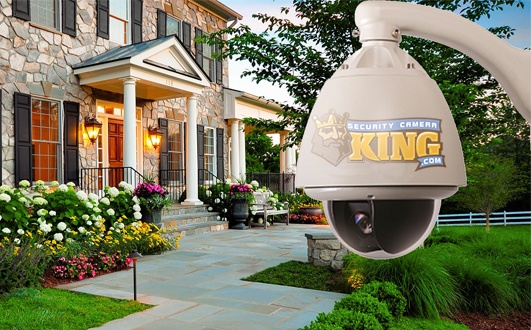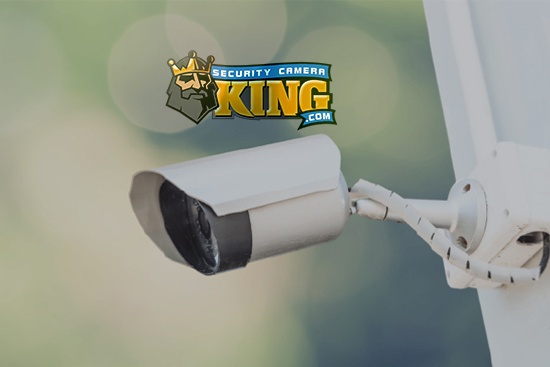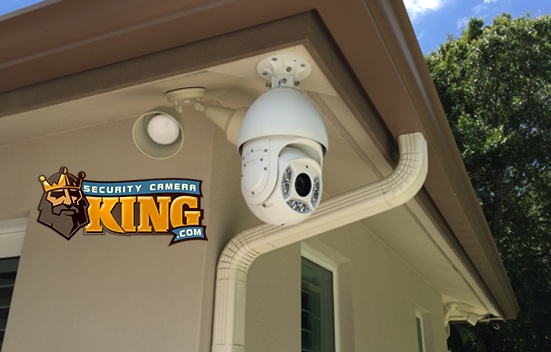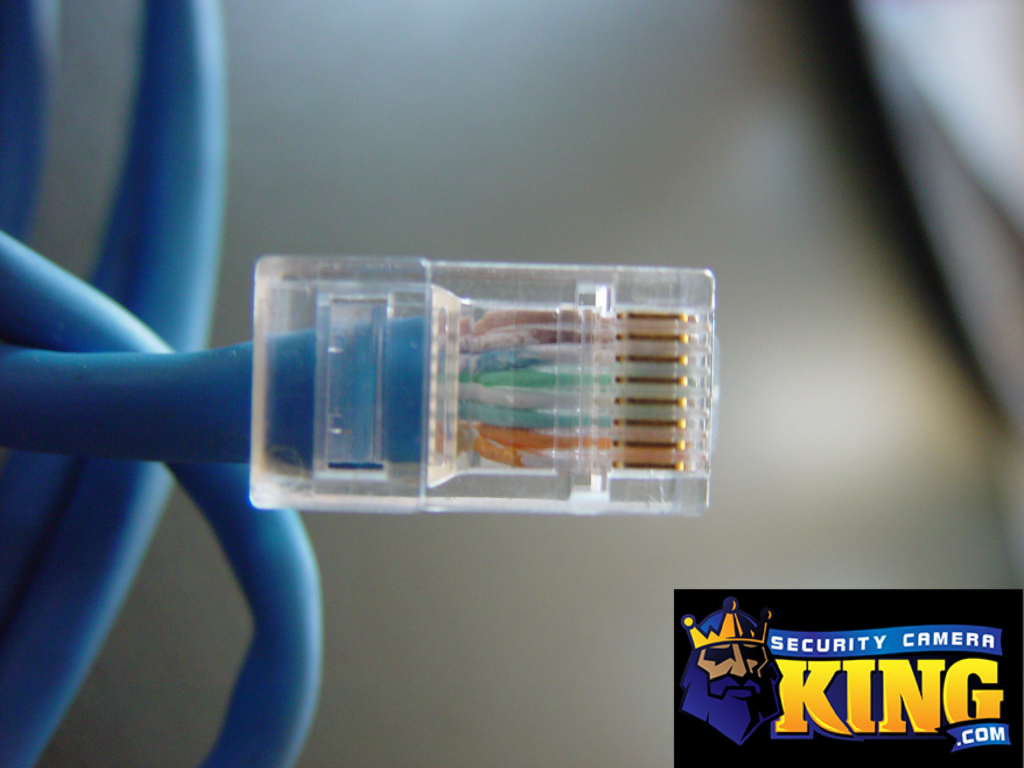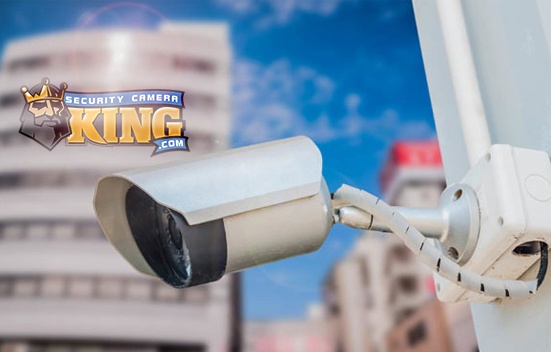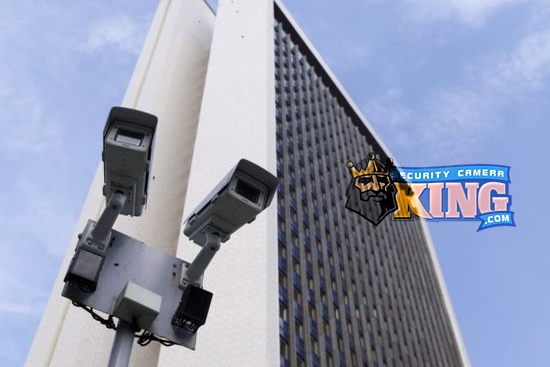An IP network camera can be referred to by many names including network cameras, webcams, and internet protocol cameras. Network IP cameras offer communities and commercial properties a number of advantages unlike older CCTV cameras of the past. Continue reading to learn more about IP network cameras, how they work, and answers to common questions consumers may have about these cameras.
How Do IP Network Cameras Work?
IP network cameras work very differently from their analog counterparts. An analog camera transmits a video signal to a DVR unit through a coax cable. In an analog security camera system, the DVR is responsible for encoding and recording the video signal captured by the security camera. The DVR is also designed with software that administers the camera settings and options. In an analog security camera system, the DVR is necessary in order to record video feeds and view them.
This means that the DVR is the center of an analog security camera system and these cameras are generally powered using a 12-volt or 24-volt power source. In contrast, an IP network camera is a standalone unit that can be managed by accessing the IP address of the camera itself. This makes IP network security cameras similar to other devices that require a network to access, usually through a computer or other network-enabled devices.
Some IP network cameras are designed to use an SD card to store recorded video feeds, which can simplify data storage. Powered using the same cable, it works alongside a POE or Power Over Ethernet switch. As previously mentioned, an IP network camera has its own individual user interface and can be managed and viewed individually, as needed. Network IP cameras transfer video feeds through a CAT5 or CAT6. One advantage of these security cameras is that a property can have as many cameras as necessary.
In the event that more than one IP network camera is necessary, an NVR can be used to easily view and store multiple video feeds. The NVR is somewhat similar to the DVR. However, in IP network security cameras, the cameras themselves are responsible for encoding the video feed. The NVR then stores the video feeds and allows them to be easily accessed from a centralized point. Computers and other devices can have NVR software installed, which allows access for users from these devices.
Three Networks Commonly In Use
Security systems will typically use one of three network types that include: wired networks, wireless networks, and cellular networks. A wired network is connected to a broadband modem or router using ethernet cables (CAT5, CAT6, RJ45). Generally, a wired network is considered the fastest and most secure method of connecting an IP network camera because there is a reduced chance of interference or signal interception. A wireless network uses a WiFi router to transmit data to and from a wired modem.
These networks are typically easy to set up and customize, however, are also slower and can be tampered with through unauthorized access. These concerns can be reduced by using encryption. Finally, a cellular network transmits data back and forth from a security camera similarly to a cellular phone. These networks are considered the slowest, however, they do not require a LAN to be in place to function.
Requirements Necessary With an IP Network Camera
An IP network camera requires a wired or wireless router depending on the model, an internet service, and a static IP address or a Dynamic Domain Server (DDNS). Users will also require a personal computer, such as a laptop or desktop, to manage and configure the security camera, and a video device that is internet enabled to act as a remote viewing station. In order to record and store video feeds, an NVR or a personal computer installed with NVR software is required.
NVR and Using Compatible IP Network Security Cameras
It is highly recommended that if customers purchase IP network security cameras for their commercial or residential property to purchase an NVR that is compatible with the camera. In order for the NVR to be compatible with the IP network security camera, the manufacturer must specifically design the NVR to be compatible with the software, options, and user interface that are embedded in the design of the IP network security camera.
This is an important consideration when searching for the right IP network camera for a community or commercial property. An example of NVR compatibility is the Elite Series product line and Sibell Series product line from Security Camera King. If a user purchases an Elite IP network security camera, it is highly recommended that they also purchase an Elite IP NVR. This will allow for a seamless connection between the IP network security camera and the NVR, allowing users to have full camera functionality and options that can be accessed through the NVR.
The connection means that users do not need to access each IP network camera individually for functionality or during the initial setup, which makes the system easy to use. Another example includes the Sibell Series product line. Similarly to the example above, a Sibell IP security camera will be designed to work seamlessly with a Sibell NVR. Besides the added convenience and ease of use, the maintenance and functionality of the camera system will be easier.
The ONVIF Protocol
In the event that a user needs to replace an NVR or add a new IP camera, they can utilize ONVIF in order to achieve compatibility. ONVIF is the most common protocol used for IP security cameras to communicate back and forth with the NVR. This means if an NVR or IP camera is ONVIF compatible they will be able to communicate with one another allowing for video output from each IP network camera to the NVR.
Software Requirements Of An IP Network Camera
Depending on the model and brand of the IP network security camera it may or may not be necessary to purchase additional software. Typically, the IP network security camera will come with the necessary software necessary to configure and use the camera. It is important to note that this includes the recording software. There are some models and brands that will include software capable of providing advanced features, such as text/email motion alerts and multiple camera viewing capabilities.
In the event that a user requires a certain feature from their IP network camera, there are NVR programs that can be purchased that will enable new functions and capabilities. To learn more about our various network IP security cameras online or how to choose a security camera system, contact our sales or support teams.
Facebook | Twitter | Google+ | YouTube



